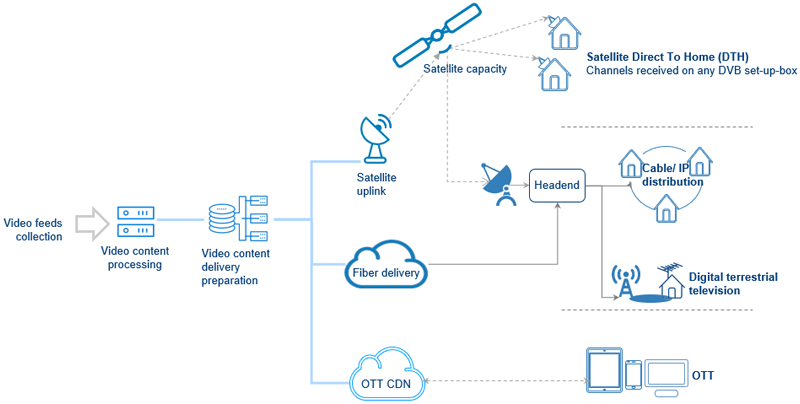Apollo Group Tv Fundamentals Explained
Table of ContentsThe smart Trick of Apollo Group Tv That Nobody is Talking About4 Easy Facts About Apollo Group Tv DescribedThe Ultimate Guide To Apollo Group TvThe Best Guide To Apollo Group Tv
In this circumstance, as opposed to having three-minute industrial places throughout a 30-minute tv program, TV programming might change to one where a consumer will be called for to have a monthly membership, so that they cen view targeted banner advertisements. This sort of marketing already occurs on the net, and the amount of information tv companies accumulate permits them to do much the same.Explain the significant trends among the broadcasting and cable television networks. Popular radio reveals such as cops dramatization Dragnet and western cowboy collection Gunsmoke were adapted for television, and new Television shows were sponsored by single marketers, just as radio programs had actually been.
Today, the television market is far much more intricate. Programs are sponsored by multiple advertisers; programs is managed by significant media conglomerates; and the three significant networks no longer dominate the airwaves however instead share their audiences with countless cable television channels. Numerous elements represent these trends within the sector, including technological growths, government regulations, and the development of new networks.

4 Easy Facts About Apollo Group Tv Explained
Also public television has actually come to be subject to the influence of advertising. Developed in 1969, (PBS) created out of a report by the Carnegie Commission on Educational Television, which checked out the function of educational, noncommercial tv on society. The record suggested that the government money public television in order to give diversity of shows during the network eraa solution produced "not to market products" yet to "improve citizenship and civil service (McCauley, 2003)." Public tv was additionally planned to provide universal accessibility to tv for viewers in country areas or visitors who can not manage to pay for personal tv services.
The duration between 1950 and 1970 is traditionally recognized as the. In addition to a little portion of airtime regulated by public television, the three major networks (called the Big 3) controlled the television market, jointly accounting for even more than 95 percent of prime-time watching. In 1986, Rupert Murdoch, the head of international company News Corp, introduced the Fox network, testing the prominence of the Big 3.
Targeting young and minority audiences with shows such as Buffy the Vampire Slayer, Moesha, Dawson's Creek, and The Wayans Bros., the new networks intended to attract terminals away from their old network affiliations. Instead than duplicating the success of Fox, UPN and WB battled to make an influence. Incapable to bring in many affiliate stations, both fledgling networks reached less houses than their bigger opponents due to the fact that they were unobtainable in some smaller cities.
This decision led the way for the growth of wire movie networks, adding to the rapid development of cord in the 1980s and 1990s. apollo group tv. Further deregulation of cable in the 1984 Cable Communications Plan Act got rid of limitations on cable rates, making it possible for operators to bill what they desired for cord services as long as there was effective competitors to the solution (a requirement that over 90 percent of all cable television markets could fulfill)
How Apollo Group Tv can Save You Time, Stress, and Money.

Having produced the very first "superstation," Turner increased his world by founding 24-hour news network CNN in 1980. At the end of the year, 28 national programs services were offered, and the wire change had begun. Over the next decade, the market undertook a duration of rapid growth and popularity, and by 1994 audiences might select from view it now 94 standard and 20 costs cord solutions.
Number 9 - http://peterjackson.mee.nu/do_you_ever_have_a_dream#c2224.16 Increased competitors from cable channels has actually caused a constant decline in the networks' audience scores. Throughout the 1950s, the cost of creating a solitary television show boosted as programs became longer and manufacturing prices soared. Sponsorship on network television changed from solitary sponsorship, in which a program was entirely supported and created by one marketer, to numerous sponsorship, in which advertisers purchased 1- or 2-minute areas on the program
Pick one of the Big 4 networks and publish out its once a week shows timetable. See the network's prime-time programs over the training course of a week, keeping in mind the target group for each program.
Apollo Group Tv for Dummies

Direct television, commonly described as traditional broadcast TV, encompasses wire and satellite television. It's called "straight" because content complies with an established programming timetable, unlike on-demand web content which the individual customer chooses to see based upon their very own choices and timetable. So, when you ask, "What is linear TV?", consider it as the traditional means of enjoying television that has actually been around for years.